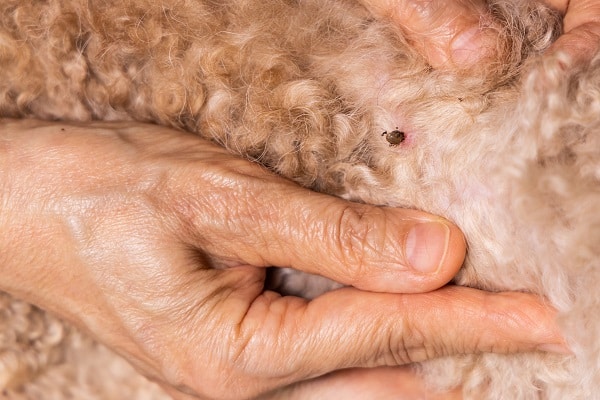Typhus, a group of infectious diseases caused by bacteria, has historically posed significant health challenges. Recently, Los Angeles County reported its first typhus-related deaths in more than 30 years, marking a concerning resurgence of this disease. This post aims to provide a comprehensive analysis of the latest cases, shedding light on the nature of the disease, its transmission, treatment, and prevention. The recent deaths serve as a stark reminder of the importance of vigilance and awareness in managing infectious diseases, even those considered rare or controlled.
Contents
The Recent Outbreak In Los Angeles

The recent outbreak of typhus in Los Angeles County has sent shockwaves through the medical community. Three people have died due to the disease, a tragic occurrence that has not been reported in the city for three decades. The US Centers for Disease Control (CDC) released a detailed report on these deaths, highlighting the acceleration of a trend that saw the number of cases in the region reach 171 in 2022, the highest peak since 2010. The sudden resurgence of typhus-related deaths has prompted health officials to take immediate action and raise public awareness.
Comparatively, the number of cases in 2010 was only 31, indicating a significant increase in recent years. This alarming growth in cases underscores the importance of continuous monitoring and preventive measures to control the spread of the disease. The first deaths related to typhus in 30 years mark a critical point in the ongoing battle against infectious diseases, emphasizing the need for a renewed focus on research, public health strategies, and community education.
Understanding Typhus

Typhus refers to a group of diseases caused by bacteria, with symptoms that can include fevers, headaches, and rash. These diseases are spread to humans via vectors such as lice, fleas, and chiggers. The rare and severe symptoms that led to the three deaths in Los Angeles included myocarditis, where heart tissue becomes inflamed, and septic shock. While these severe complications are uncommon, they highlight the potential danger of typhus, especially when left untreated or misdiagnosed.
Understanding the nature of typhus is essential for effective prevention and treatment. The diseases are often associated with unsanitary living conditions, where vectors like fleas can thrive. The CDC’s detailed report on the recent deaths provides valuable insights into the disease’s behavior, transmission, and potential risk factors. It serves as a crucial resource for healthcare professionals, policymakers, and the general public, guiding efforts to control the spread of typhus and protect vulnerable populations.
Transmission And Infection

The transmission of typhus begins with an infected flea jumping from its host, such as a rat, dog, cat, or opossum, to a human. When this happens, the flea often defecates, and since the flea bite is itchy, scratching it can introduce the bacteria into the human body. Dr. William Shaffner, a professor of infectious diseases, explains this process vividly, emphasizing the role of the flea’s feces in transmitting the bacteria.
In a typical year, the US would expect to see 50 to 100 cases of typhus, making the recent spike in Los Angeles particularly concerning. An understanding of how transmission occurs is vital in developing strategies to prevent and control the disease. Awareness of the transmission process, coupled with preventive measures like proper hygiene and flea control, can significantly reduce the risk of infection.
Treatment And Medical Response

The treatment of typhus primarily involves the use of common antibiotics, such as doxycycline. Early diagnosis and prompt treatment are crucial in managing the disease effectively, as delay can lead to severe complications, including myocarditis and septic shock. Dr. Dung Trinh, a California-based internal medicine specialist, emphasizes the importance of seeking medical consultation if symptoms are present, especially for those who have traveled to or live in affected areas. Diagnostic tests might include blood tests and molecular tests like PCR to detect the bacterium.
In addition to medical treatment, public health responses play a vital role in controlling the spread of typhus. Health authorities must ensure that accurate information is disseminated to the public and that medical professionals are equipped with the necessary resources to diagnose and treat the disease. The absence of a vaccine for this form of typhus further underscores the importance of early detection and treatment.
Who Is At Increased Risk?

Typhus is rarely fatal when treated with antibiotics, but some individuals are at higher risk for severe symptoms, including fatal outcomes. The CDC’s report on the recent deaths in Los Angeles noted that one of the affected individuals was homeless, pointing to the increased risk among those in unsanitary living conditions. Experts like Dr. William Schaffner stress that these unfortunate circumstances can significantly elevate the risk of infection, particularly in endemic areas. Social workers and support systems must be mindful of how to avoid infection when assisting those in need.
Preventing infection among high-risk groups requires targeted interventions and support. This includes providing access to healthcare, promoting hygiene practices, and ensuring that preventive measures like insect repellent are readily available. The recent outbreak in Los Angeles serves as a stark reminder that typhus can disproportionately affect vulnerable populations, making targeted public health interventions essential. Collaborative efforts between health authorities, community organizations, and individuals can make a significant difference in reducing the risk and impact of typhus among those most at risk.
Prevention And Control Measures

Prevention is key in managing typhus, and there are several measures that individuals and communities can take to reduce the risk of infection. These include using flea control products on pets, wearing protective clothing, using insect repellents on exposed skin, and minimizing direct contact with stray animals that may carry fleas. Dr. Dung Trinh adds that keeping living spaces clean and following proper handwashing procedures are also essential in reducing risk.
Public health authorities must also play a proactive role in prevention and control. This includes educating the public about the risks of typhus and the measures they can take to protect themselves. Monitoring and controlling flea infestations in animal populations, particularly in endemic areas, are also vital.
Other Outbreaks And Investigations

The resurgence of typhus is not limited to Los Angeles. The CDC is also investigating an increase in flea-borne typhus in Texas, and officials are exploring whether the increase in cases is linked to a mutation of the disease. Currently, there is no evidence of such a mutation, but the investigations continue. Monitoring and understanding the disease’s behavior across different regions is crucial for developing effective interventions and preventive measures.
In California, flea-borne typhus is required to be reported, and public health experts are actively monitoring animal populations to see if the disease increases there. This includes monitoring rodent, opossum, cat, and dog flea infestations and the number of infected fleas. Such surveillance is vital to understanding disease ecology and directing interventions to prevent human disease. The ongoing investigations and monitoring efforts reflect the complexity of typhus control and the need for a multifaceted approach that includes research, surveillance, public education, and control of animal-associated diseases.
Bottom Line
The resurgence of typhus in Los Angeles County after three decades without fatalities is a stark reminder of the persistent challenges posed by infectious diseases. This analysis has delved into the latest cases, shedding light on the transmission, treatment, risk factors, prevention, and broader public health implications. The recent deaths emphasize the critical need for continuous monitoring, timely medical response, robust preventive measures, and targeted support for vulnerable populations. As you reflect on the lessons from this outbreak, a coordinated and comprehensive approach emerges as essential in safeguarding public health and preventing the recurrence of such tragic incidents.


